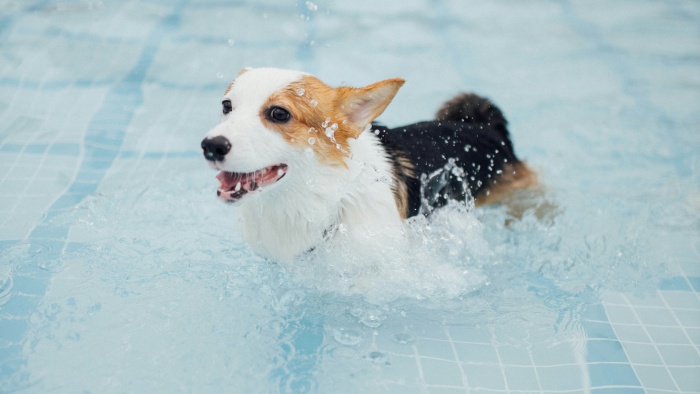How To Treat Hot Spots On Dogs

Hot spots on dogs result from compulsive self-trauma as the dog repeatedly scratches, licks, or bites an area that itches, leading to an open sore. This habitual licking, scratching, and biting turns into a relentless cycle that the dog finds impossible to break.
To manage the hotspots, various strategies are employed to alleviate the itchiness and bar the dog from accessing and exacerbating the hotspot. Cleaning the affected zone meticulously is crucial, and employing a protective collar can effectively restrict them from disturbing the treatment site.
If left untreated initially, hotspots may persist as a recurrent problem. However, with appropriate attention and management, your dog’s discomfort can be swiftly alleviated. Continue reading to learn what hot spots entail and the methods for their treatment.
Understanding the causes and symptoms
Hot spots are notably prevalent during the summer and warmer months, attributed to the hot, humid weather conditions. These areas in dogs, known as acute moist dermatitis, are both itchy and painful.
The constant licking, biting, and scratching by your dog in a specific area leads to inflammation, making the spot warm to the touch. Initially, the irritation might stem from insects bothering your dog, who is merely trying to eliminate the nuisance.
The condition of a hotspot can worsen with moisture exposure from swimming or rain, perpetuating a vicious cycle where licking exacerbates skin irritation, prompting even more licking. Dogs that remain damp after swimming or bathing are at a heightened risk of developing hot spots.

The size of hot spots can escalate rapidly, expanding from a dime to a pancake within hours, and may present with or without pus. Typically found on the dog’s head, feet, legs, and hips, hot spots can emerge from various triggers, including:
- Fleas or mites
- Food allergies
- Inadequate nutrition
- Insect bites or stings
- Ear infections
- Irritated anal sacs
- Neglect in grooming
- Depression or anxiety
- Irritability or frustration
Identifying the appearance and potential causes of hot spots is crucial for prompt and effective management, helping to stay ahead of this uncomfortable condition for your dog.
What are the characteristics of hot spots on dogs?
Hot spots on dogs appear as sore, raw patches or scrapes on the skin. These areas are typically swollen, reddened, and devoid of hair. They may secrete fluid, bleed, or be filled with pus. Dogs afflicted with hot spots will persistently lick, bite, and scratch in these areas.
These spots can rapidly increase in size and, without timely treatment, can become alarmingly large. The hot spots worsen, the more your dog engages in scratching at them.
Identifying symptoms of hot spots in dogs
Hot spots tend to occur more frequently in breeds with long hair, as their skin receives less air circulation. The symptoms of hot spots vary and include:
- Itchy or painful skin
- Persistent chewing or licking at the site of the hot spot
- Inflammation
- Redness
- Swelling
- Crusted over scabs
- Discharge of pus
- Dryness of the skin
- Loss of hair
- Fur that is moist and clumped together
- A foul smell emanating from the affected area
Recognizing any of these signs early on is crucial for the well-being of your dog. There are treatments available to address these symptoms before they escalate.
If the condition seems to cause discomfort, it likely is, and you are advised to consult your veterinarian promptly to discuss appropriate care steps.
Managing and preventing hot spots in dogs
Preventing hot spots in dogs involves adhering to good hygiene practices through regular grooming and ensuring effective parasite control with veterinary assessments.
Addressing skin infections promptly is vital for hot spot prevention. It’s important to dry your dog thoroughly after swimming or baths to avoid moisture accumulation.
Incorporating Omega-3 fatty acids into your dog’s diet can also fortify their skin barrier, reducing their vulnerability to allergens and infections. With diligent care, you can significantly reduce the likelihood of your dog developing hot spots.

For treating hot spots, consider the following strategies:
Trimming hair around the hot spot to prevent matting
Use clippers to trim the fur around the hot spot, avoiding scissors to prevent matting and promote air circulation, which aids healing. Be cautious when trimming, as grooming can be uncomfortable for your dog, who might require sedation by a veterinarian for this procedure.
Cleaning the affected area with a gentle solution
Ensure the hot spot and its surrounding area are cleaned thoroughly, removing any matted fur to avoid further irritation. This step might be painful, and professional assistance from a veterinary nurse might be necessary, potentially with sedation, to apply a gentle antiseptic like chlorhexidine for healing.
Bathing with a special shampoo
Wash your dog with a chlorhexidine-based shampoo or another gentle formula designed for hot spot care to prevent new ones from forming. Opt for shampoos that are soothing to avoid additional irritation.
Using an E-collar to prevent further damage
An Elizabethan or No Bite collar can prevent your dog from licking or biting the hotspot, facilitating healing by restricting access to the affected area. E-collars are especially useful for preventing dogs from reaching hot spots on their ears, though effectiveness may vary based on the collar type.

Applying topical or oral antibiotics for infections
Administer antibiotics, available in topical creams or oral medications, to eliminate bacterial infections. These treatments often combine anti-itch and anti-inflammatory properties, with topical applications typically recommended twice daily for up to two weeks. Complete the full course to ensure the hot spot heals and doesn’t return.
Topical or oral steroids to minimize itching and inflammation
Steroids and antibiotics, in cream or tablet form, can be prescribed to reduce inflammation and address the infection, although not every hotspot will require them. Your vet will determine the most appropriate treatment plan.
Utilizing medicated wipes for gentle cleansing
Medicated wipes containing chlorhexidine can effectively remove bacteria and yeast, cleansing and aiding in the healing of skin infections. These wipes offer an antimicrobial, antifungal, and antiseptic solution that is both easy to use and convenient compared to liquid treatments.
Seek veterinary advice for your dog’s hot spots
Hot spots can significantly discomfort your dog, requiring sensitive care and treatment. Additionally, there are preventative measures to safeguard your dog from developing hot spots.
It’s crucial to continue any prescribed treatment to avoid recurrence. By working closely with your veterinarian, your dog can swiftly recover and return to his usual self.
Conclusion
Managing hot spots on dogs demands a comprehensive approach that includes both prevention and treatment. Through regular grooming, dietary management with Omega-3 fatty acids, and prompt medical attention for any skin irritations, owners can significantly reduce the risk of these painful lesions.
Should hot spots occur, immediate and careful treatment involving cleaning, medicating, and possibly employing an E-collar is essential to alleviate discomfort and prevent further complications.
By understanding the causes, recognizing the symptoms early, and adhering to the recommended management strategies, you can ensure your dog remains comfortable and healthy, avoiding the distress associated with hot spots.
Collaboration with your veterinarian is key to effectively addressing and preventing hot spots, ensuring your furry friend’s wellbeing and happiness.
FAQs
What steps can I take to prevent my dog from developing hot spots?
To prevent hot spots, maintain good hygiene through regular grooming, keep your dog dry after swimming or bathing, manage parasites with veterinary help, and incorporate Omega-3 fatty acids into your dog’s diet to strengthen their skin barrier against allergens and infections.
How can I identify if my dog has hot spots and when should I consult a vet?
Hot spots appear as raw, sore patches that may be swollen, red, and hairless, sometimes oozing fluid or pus. If your dog persistently licks, bites, or scratches an area, or if you notice any of these symptoms, it’s important to consult a vet for a proper diagnosis and treatment plan.
Are certain dog breeds more susceptible to hot spots, and why?
Yes, breeds with long hair are more susceptible to hot spots due to less air circulation reaching their skin, which can foster moist conditions conducive to the development of hot spots. Regular grooming and skin care are crucial for these breeds.
What are the most common triggers of hot spots in dogs?
Common triggers include fleas or mites, food allergies, insect bites or stings, ear infections, neglected grooming, and environmental factors such as hot, humid weather. Identifying and addressing these triggers is key to managing and preventing hot spots.
Can hot spots on dogs lead to more serious health issues if left untreated?
Yes, without timely treatment, hot spots can rapidly grow in size and severity, potentially leading to more significant infections. It’s crucial to treat hot spots promptly to prevent complications and ensure your dog’s comfort and health.

